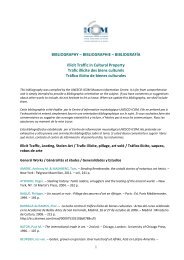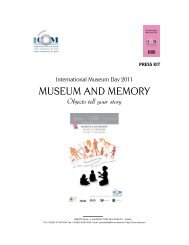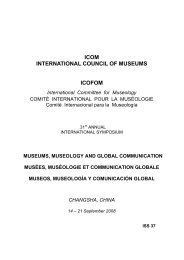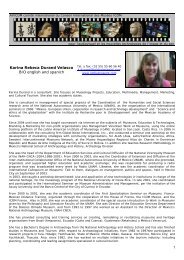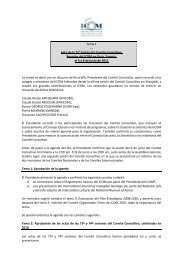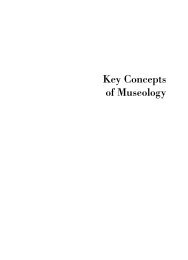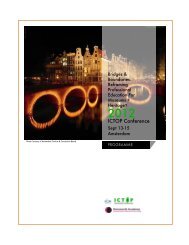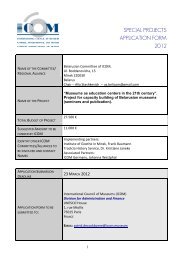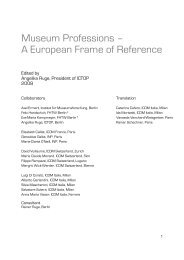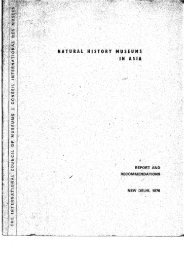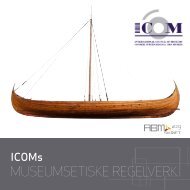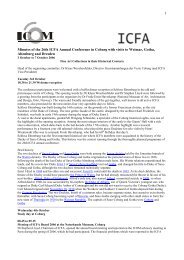ISS 25 (1995).pdf - The International Council of Museums
ISS 25 (1995).pdf - The International Council of Museums
ISS 25 (1995).pdf - The International Council of Museums
Create successful ePaper yourself
Turn your PDF publications into a flip-book with our unique Google optimized e-Paper software.
and what we lost when the air and the fjord were severely polluted by heavy<br />
metal waste. We also depict the process <strong>of</strong> cleaning up the fjord and, in this<br />
respect, measurements taken by the local industry and the government. In<br />
1988 this discussion was a hot topic in the news, and some inhabitants felt that<br />
Odda was a scapegoat. <strong>The</strong> town was looked down upon because <strong>of</strong> the<br />
production <strong>of</strong> heavy metals, which were bought by other countries as<br />
necessities in modem welfare states. <strong>The</strong> museum produced a slides show on<br />
the pollution problem, and we also have interviews and photos from this<br />
period.<br />
It must be mentioned that we are not a pure technical and industrial museum.<br />
We have made an effort to describe all sides <strong>of</strong> the society, and naturally this<br />
means that we also try to present the social history in our society.<br />
What is the status <strong>of</strong> the museum today?<br />
<strong>The</strong> local politicians and the Mayor are well aware <strong>of</strong> the value <strong>of</strong> the work<br />
done by the museum. <strong>The</strong>y are 100% behind our proposals and grant us as<br />
much money as they can, but it is not enough to cover the costs <strong>of</strong> the work we<br />
are doing. It is expensive to take care <strong>of</strong> our industrial history. Odda is an<br />
important town in the Norwegian industry. <strong>The</strong> monuments here are <strong>of</strong> great<br />
national interest, and therefore we feel that the government must grant more<br />
money in the future.<br />
Tyssedal power station dates back to 1908 and was one <strong>of</strong> the biggest power<br />
stations in Norway and Europe when it was built. It is no wonder therefore<br />
that the key word <strong>of</strong> our museum activity is "With water as a key resource".<br />
We took the initiative together with the local politicians to get the power<br />
station and the intake pipes acknowledged as listed monuments. <strong>The</strong> power<br />
company no longer produces hydro electricity in this building and wanted to<br />
remove the equipment from 1908 - 1989 (unique machinery) in order to use<br />
the building for the production <strong>of</strong> small fish or other commercial purposes.<br />
To my mind Tyssedal power station is unique also because <strong>of</strong> the fact that it is<br />
the heart <strong>of</strong> the very existence <strong>of</strong> this society. It has been dependent on<br />
electricity for the last 90 years.<br />
At present the government wants to secure the middle part <strong>of</strong> the power<br />
station with its interior and let the remaining parts be used for commercial<br />
purposes, decided by the power company. <strong>The</strong> museum and the local<br />
politicians however, want to save the entire building. <strong>The</strong> final decision is yet<br />
to be made.<br />
<strong>The</strong> industrial town <strong>of</strong> Tyssedal was planned by the most prominent<br />
Norwegian architects, and we can still read this place like a book. A clear<br />
199



